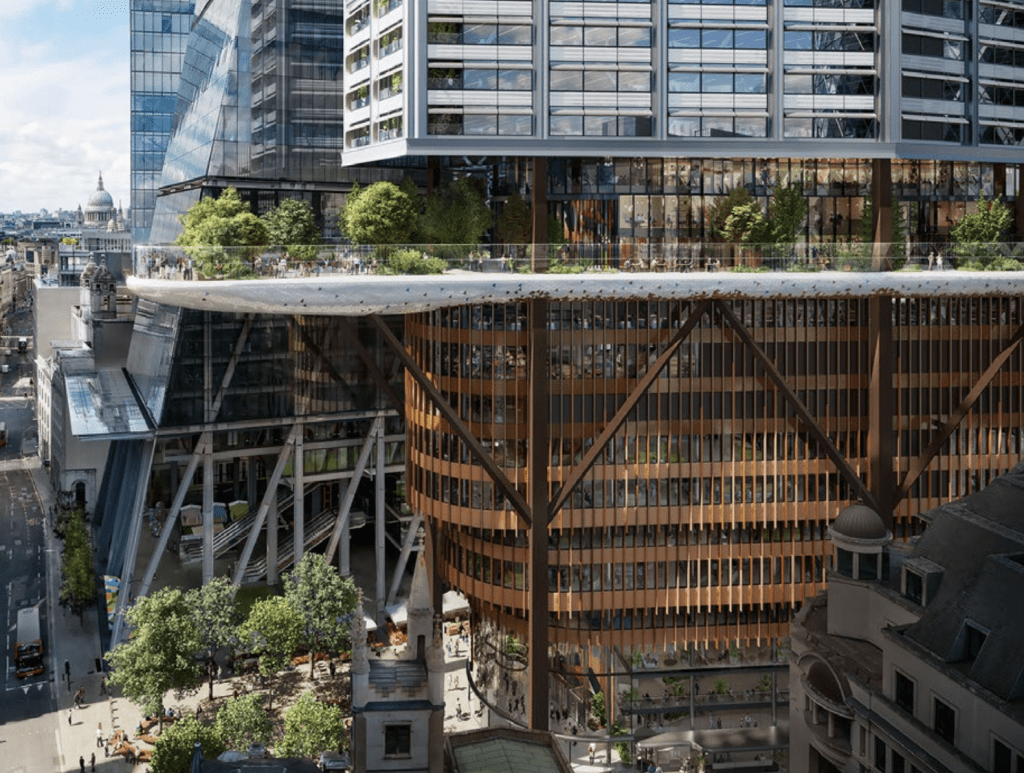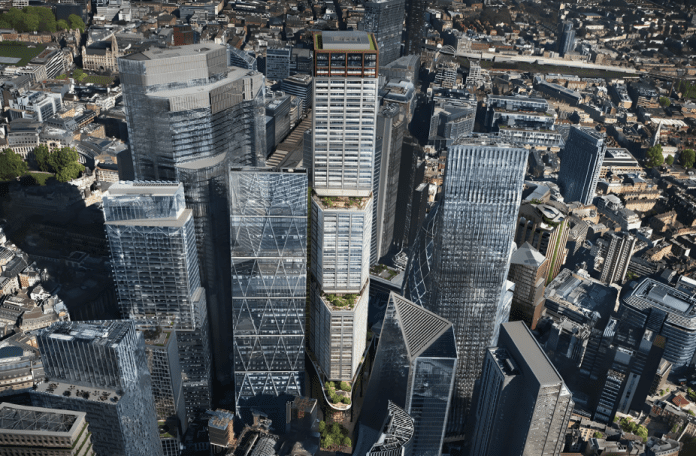Revised plans have been submitted for 1 Undershaft, which would share the Shard’s title as tallest skyscraper in London and Western Europe
1 Undershaft would join the Shard as the tallest skyscraper in London and Western Europe, reaching the dizzying height of 309.6m-the maximum ceiling permitted by the civil aviation authority.
The new design is 5 metres taller than the plans that gained consent from the City of London in 2019.
Several changes have been made from the original design
The inital plans were for a 289m building, designed as a 73-storey cuboid that would feature an external cross-bracing structure and 90,000 square metres of office space.
Development manager Stanhope and architect Eric Parry Architects have now submitted a new design for a stepped tower, featuring outdoor amenity spaces.

These include an elevated public podium garden with a glass floor at level 11, new food and flexible cultural spaces at levels 10, 11 and 12 and retain the original plan’s free-to-visit public viewing gallery and education spaces curated by the Museum of London.
Backed by Singaporean developer Aroland Holdings, the updated design contains 160,000 square metres of office space and a further 20,000 square metres of public realm space and has shed the cross-bracing structure for a glazed facade.
There will also be office terraces on floors 30 and 48.
According to Eric Parry, the new proposal for 1 Undershaft “will still be the tallest in the city cluster and retains the upper floors for educational and public access through a collaboration with the Museum of London. The revised proposals will enable us to deliver a more sustainable building with enhanced urban greening.”
Demolition of the existing building will be complex
Currently the site is occupied by the 28-storey St Helens- also known as the Aviva Tower- which completed construction in 1969.
The unique top-hung design of the existing building will require demolition to start from the bottom up, requiring temporary support for the top levels. Keltbray has advised on the pre-demolition process.
Construction is pencilled to begin in 2026, pending planning approval and completion of demolition works.















